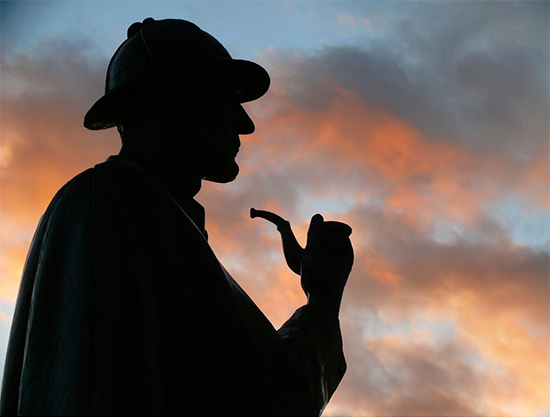 |
Sir Arthur received his MD degree in 1885 and trained in ophthalmology in Vienna and Paris, after which he set up an ophthalmology practice in central London in 1882. He was writing during his medical training and career, with his first Sherlock Holmes mystery, A Study in Scarlet, accepted for publication in 1886, when Sir Arthur was 27 years old. It was in that book that a magnifying glass was first used in a work of fiction to examine a crime scene. The medical influence in the Holmes series is clear as cited in an essay by Key and Rodin, “Included within the 60 Holmes adventures are references to 68 diseases, 32 medical terms, 38 doctors, 22 drugs, 12 medical specialties, 6 hospitals and even 3 medical journals and 2 medical schools.” Sir Arthur continued his dual careers as ophthalmologist and author until 1891, when he turned his full attention to writing after surviving a severe case of influenza.
As for the cataract surgery scalpel, Dr. Watson, a general practitioner, identifies it in The Adventure of Silver Blaze, published in 1892. In the story, a trainer tried to sabotage the racehorse Silver Blaze by injuring its leg to keep it from racing. The culprit believed that the injury from the fine blade of the surgical knife would be undetectable. (I won’t spoil any more of the story if you haven’t read it!) The use of a microscope to examine blood stains appeared in A Study in Scarlet, although the technique already had been in use to examine blood samples treated with a reagent.
Sherlock Holmes is known for his careful analysis of forensic evidence, attention to detail and deductive reasoning to solve crimes. Within the limitations of medicine at the time, those skills were critical to the diagnostic abilities of physicians. When we remember that Sir Arthur’s first book was published in 1886, and then consider that the first forensic science program was established at the University of Lausanne, Switzerland in 1909, it hardly seems a leap to say that Sir Arthur influenced the use of forensic medicine in criminal investigations. In The Sign of the Four, published in 1890, Holmes used fingerprint analysis in his investigation, more than ten years before Scotland Yard fully used them, and he was an early proponent of preserving a crime scene.
In applying the scientific method of medicine to detective work, Sir Arthur offered innovations to forensic science, often before they were used in real life. What may have been elementary to Holmes, were new concepts in crime solving.













